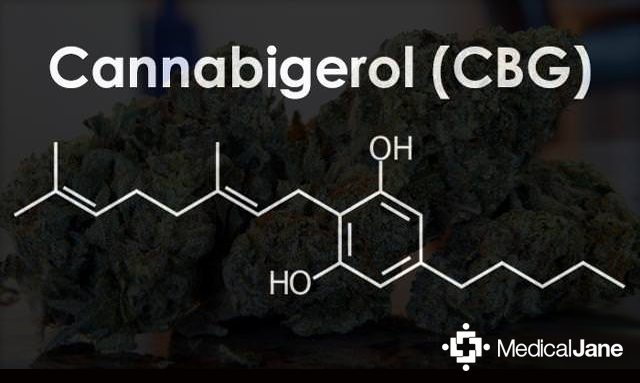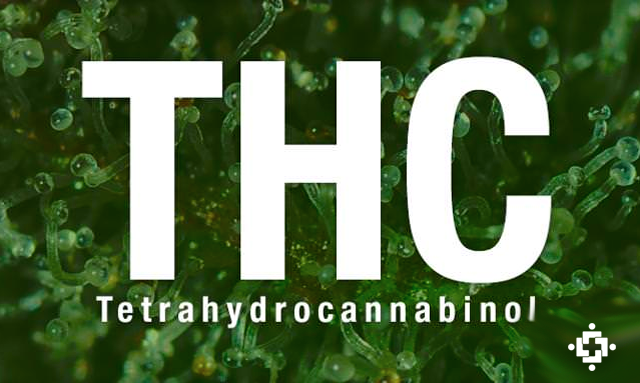Cannabinoid Science
view the latest cannabinoid research from around the world
Cannabinoids 101
Cannabinoids are a diverse set of chemical compounds that bind to special receptors in the human body that make up what is known as the endocannabinoid system. The “key and lock” metaphor is often used to describe this process. The human body possesses specific binding sites (“locks”) on the surface of many cell types, and our body produces several endocannabinoids (“keys”) that bind to these cannabinoid receptors (CB) to activate or “unlock” them.
In 1992, researchers detected an endogenous substance that binds to cannabinoid receptors for the first time. This substance, known as anandamide, comes from the Sanskrit word “Ananda” for bliss and “amide” due to its chemical structure. A second endocannabinoid was discovered in 1995, 2-arachidonoylglycerol (2-AG). These two endocannabinoids are the best studied so far. Today, it is thought that about 200+ related substances exist, which resemble the endocannabinoids and complement their function in what has been termed the “entourage effect.” Several endocannabinoids do not only bind to cannabinoid receptors, but also to a possible CB3 receptor (the GPR55 receptor), to vanilloid receptors and further receptors.
In addition to endocannabinoids, scientists have now identified cannabinoids found in the cannabis plant (phytocannabinoids) that work to mimic or counteract the effects of some endocannabinoids. Phytocannabinoids and terpenes are manufactured in resin glands (trichomes) present on the flowers and main fan leaves of late-stage cannabis plants. The amount of resin produced and its cannabinoid content varies by plant gender, growing conditions and harvesting time. The chemical stability of cannabinoids in harvested plant material is affected by moisture, temperature, light and storage, but will degrade over time in any storage conditions.
When a cannabinoid causes a receptor to act in the same way as it would to a naturally occurring hormone or neurotransmitter, then it is labeled “agonist.” On the other hand, if the cannabinoid prevents the receptor from binding to the naturally occurring compound, thereby causing the resulting event (e.g., pain, appetite, alertness) to be altered or diminished, it is labeled “antagonist.” Research is mounting to better understand how specific cannabinoids can unlock (or lock in some cases) specific receptors.
Over 100 phytocannabinoids have been identified in the cannabis plant, many of which have documented medicinal value. Most are closely related or differ by only a single chemical part. The most talked-about and researched cannabinoids found in the cannabis plant are tetrahydrocannabinol (THC) for its psychoactive properties (“high feeling”) and cannabidiol (CBD) for its healing properties.
Cannabinoids can be administered by smoking, vaporizing, oral ingestion, transdermal patch, intravenous injection, sublingual absorption or rectal suppository.
Endocannabinoid System
An Endogenous Cannabinoid System (ECS), commonly referred to as an “Endocannabinoid System,” is found in every animal and regulates a broad range of biological functions. The ECS is a biochemical control system of neuromodulatory lipids (molecules that include fats, waxes, sterols and fat-soluble vitamins such as vitamins A, D, E and K and others) and specialized receptors configured to accept certain cannabinoids. In general, a given receptor will accept only particular classes of compounds and will be unaffected by other compounds, just as a specific key is needed to open a lock.
Specialized receptors are located throughout the human body, including but not limited to, in the hippocampus (memory, learning), the cerebral cortex (decision-making, emotional behavior), the cerebellum (motor control, coordination), putamen (movement, learning), the hypothalamus (appetite, body temperature) and the amygdala (emotions). When a specific cannabinoid or combination of cannabinoids bind to a specialized receptor, an event or a series of events, is triggered in the cell, resulting in a change in the cell’s activity, its gene regulation and/or the signals that it sends to neighboring cells. This process is called “signal transduction.”
Clinical endocannabinoid deficiency (CEDC) is a proposed spectrum disorder that has been implicated in a range of illnesses, including fibromyalgia, migraine and irritable bowel syndrome. So far, very little clinical research has been conducted on this speculative disorder. It is quite possible that these very common conditions may respond favorably to cannabinoid therapies. However, this will only happen if more research is conducted.
Cannabinoid Receptors
The primary cannabinoid receptors are identified as Cannabinoid type 1 receptors (CB1-R) and Cannabinoid type 2 receptors (CB2-R). The receptors can be “unlocked” by three kinds of cannabinoids:
- Endocannabinoids – endogenous-fatty-acid cannabinoids produced naturally in the body (e.g., anandamide and 2-AG)
- Phytocannabinoids – concentrated in the oily resin of the buds and leaves of plants such as cannabis (e.g., THC and CBD)
- Synthetic cannabinoids – manufactured by artificial means such as in a laboratory
First detected in the brain, science now shows that CB1-R are also located in many other organs, connective tissues, gonads and glands. CB1-R are not found in the medulla oblongata (the part of the brain stem responsible for respiratory and cardiovascular functions). CB1-R play an important role in the coordination of movements, spatial orientation, sensory perceptions (taste, touch, smell, hearing), cognitive performance and motivation.
The most important function of the CB1-R is the reduction of excessive or inadequate signaling by the neurotransmitters (messengers) in the brain. By the activation of the CB1-R, the hyperactivity or hypoactivity of the messengers (e.g., serotonin, dopamine) is regulated back into balance. For example, when THC binds to CB1-R, activity in the pain circuits is inhibited, thus resulting in reduced pain. Many other symptoms such as nausea, muscle spasticity and seizures can be alleviated or diminished with cannabinoid therapy.
CB2-R are primarily associated with the immune system and found outside of the brain in such places as the gut, spleen, liver, heart, kidneys, bones, blood vessels, lymph cells, endocrine glands and reproductive organs. For example, CBD is keyed to CB2-R, and good evidence shows CBD is a beneficial therapeutic strategy to lessen the impact of inflammatory and neuro-inflammatory diseases. Until recently, it was believed that CB-2R played no role with nerve cells or bundles. However, studies now show that it also plays an important role in the signal processing of the brain.
A third receptor that gets little attention is the transient receptor potential vanilloid-type one (TRPV1). The function of TRPV1 is to detect and regulate body temperature. In addition, TRPV1 is responsible for the sensations of extreme external heat and pain and is subject to desensitization. Therefore, if continuously stimulated, the pathway will eventually slow down or even stop. This raises therapeutic possibilities for agents to effectively treat certain kinds of neuropathic pain.
New vs. Old Science
Since the initial discovery of the CB1 receptor site by Allyn Howlett and William Devane in 1988, it has been an “accepted” fact that CBD, unlike THC, has little binding affinity for the CB1 receptor. Unfortunately, this assumption was not based on science. New data emerging from the international cannabinoid research community indicates that CBD interacts directly with the CB1 receptor site in ways that are therapeutically relevant. CBD parks at a different docking site on the CB1-R that is functionally distinct from THC’s orthosteric binding site. CBD attaches to what’s known as an “allosteric” binding site on CB1-R. When CBD docks at the receptor, it does not initiate a signaling cascade. It does, however, influence how the receptor responds to stimulation by THC and the endogenous cannabinoids. Allosteric modulation of CB1-R changes the conformation (shape) of the receptor, and this can have a dramatic impact on the efficiency of cell signaling.
A positive allosteric modulator that enhances CB1 receptor signaling indicates that CBD could be helpful treating diseases linked to endocannabinoid deficits (such as anorexia, migraines, irritable bowel, fibromyalgia, and PTSD), in addition to treating conditions associated with endocannabinoid excess or overactivity (obesity, metabolic disorders, liver disease, cardiovascular issues).
Entourage Effect
The concept of the entourage effect was introduced in 1998 by Israeli scientists Shimon Ben-Shabat and Raphael Mechoulam. The theory is that cannabinoids within the cannabis plant work together through a network of coincidental relationships as part of a greater organism and affect the body in a mechanism similar to the body’s own endocannabinoid system. Basically, these compounds work better together than in isolation.
The longstanding, successful use of cannabis as a whole makes it necessary to find a rationale for its medicinal superiority in comparison to products containing isolated, single components of the cannabis plant, or synthetic cannabinoids trying to replicate the natural components.
Research on the benefits of THC and CBD in isolation is well established. THC demonstrates analgesic, anti-emetic, and anti-inflammatory properties. CBD possesses anti-psychotic, anti-seizure, and anti-anxiety properties. However, evidence is mounting that by isolating these cannabinoids or creating them in a lab, that the resulting effects may have limited therapeutic use. It is also the reason visits to a doctor or emergency room have increased. When delivered in high concentrations, THC can cause overdosing. Although an acute THC overdose rarely requires medical intervention, the side effects can be very unpleasant. Good evidence now shows that THC and CBD work together. CBD is known to lock out THC at the CB1-R. Therefore, applying the entourage effect, increasing CBD in the case of an overdose may lessen the effects of THC.
The synthetic cannabinoid, Marinol, is another example. Marinol is a pure, synthetic form of THC. When the drug was first introduced in the mid-80s, it was thought it would have the same effect as the cannabis plant as a whole. However, it soon became clear that most patients were not responding the same as when THC is consumed by smoking or ingesting naturally-grown cannabis. Researchers soon realized that other compounds, such as CBD and various terpenes, play a larger role than previously realized.
List of Cannabinoids
Cannabidiol (CBD)
Tetrahydrocannabinol (THC)
Cannabidivarin (CBDV)
Tetrahydrocannabinolic Acid (THCA)
Cannabidiolic Acid (CBDA)
Cannabigerol (CBG)
Cannabinol (CBN)
Cannabichromene (CBC)
Tetrahydrocannabivarin (THCV)
FAQ
Learn More
Citations & References
There are 10 references in this page. Click here to view them all.
- Costa, B., Giagnoni, G., Franke, C., Trovato, A. E., & Colleoni, M. (2004). Vanilloid TRPV1 receptor mediates the antihyperalgesic effect of the non psychoactive cannabinoid, cannabidiol, in a rat model of acute inflammation. British Journal of Pharmacology, 143(2), 247-250. doi:10.1038/sj.bjc.0705920
- Devinsky, O., Thiele, E., Laux, L., Friedman, D., Patel, A., Bluvstein, J., . . . Marsh, E. (n.d.). Efficacy and Safety of Epidiolex (Cannabidiol) in Children and Young Adults. Retrieved June 01, 2016, from https://www.aesnet.org/meetings_events/annual_meeting_abstracts/view/2414222
- Elsohly, M. A., & Slade, D. (2005). Chemical constituents of marijuana: The complex mixture of natural cannabinoids. Life Sciences, 78(5), 539-548. doi:10.1016/j.lfs.2005.09.011
- Watson SJ, Benson JA, Jr, Joy JE. Marijuana and medicine: assessing the science base: a summary of the 1999 Institute of Medicine (Report). Retrieved June 1, 2016, from http://medicalmarijuana.procon.org/sourcefiles/IOM_Report.pdf
- Mandal, A. (2010). What are Cannabinoids? Retrieved June 01, 2016, from http://www.news-medical.net/health/What-are-Cannabinoids.aspx
- Petrocellis, L. D., Ligresti, A., Moriello, A. S., Allarà, M., Bisogno, T., Petrosino, S., . . . Marzo, V. D. (2011). Effects of cannabinoids and cannabinoid-enriched Cannabis extracts on TRP channels and endocannabinoid metabolic enzymes. British Journal of Pharmacology, 163(7), 1479-1494. doi:10.1111/j.1476-5381.2010.01166.x
- Russo, E. (n.d.). Introduction to the Endocannabinoid System (Working paper). Retrieved June 1, 2016, from http://www.phytecs.com/wp-content/uploads/2015/02/IntroductionECS.pdf
- Russo, E. B. (2011). Taming THC: Potential cannabis synergy and phytocannabinoid-terpenoid entourage effects. British Journal of Pharmacology,163(7), 1344-1364. doi:10.1111/j.1476-5381.2011.01238.x
- Schrot, R. J., & Hubbard, J. R. (2016). Cannabinoids: Medical implications. Annals of Medicine, 48(3), 128-141. doi:10.3109/07853890.2016.1145794
- Neuroscientists discover previously unknown function of cannabinoid receptor: Study could improve our insights into brain diseases. (2016, May 02). Retrieved June 01, 2016, from https://www.sciencedaily.com/releases/2016/05/160502111228.htm DZNE - German Center for Neurodegenerative Diseases


